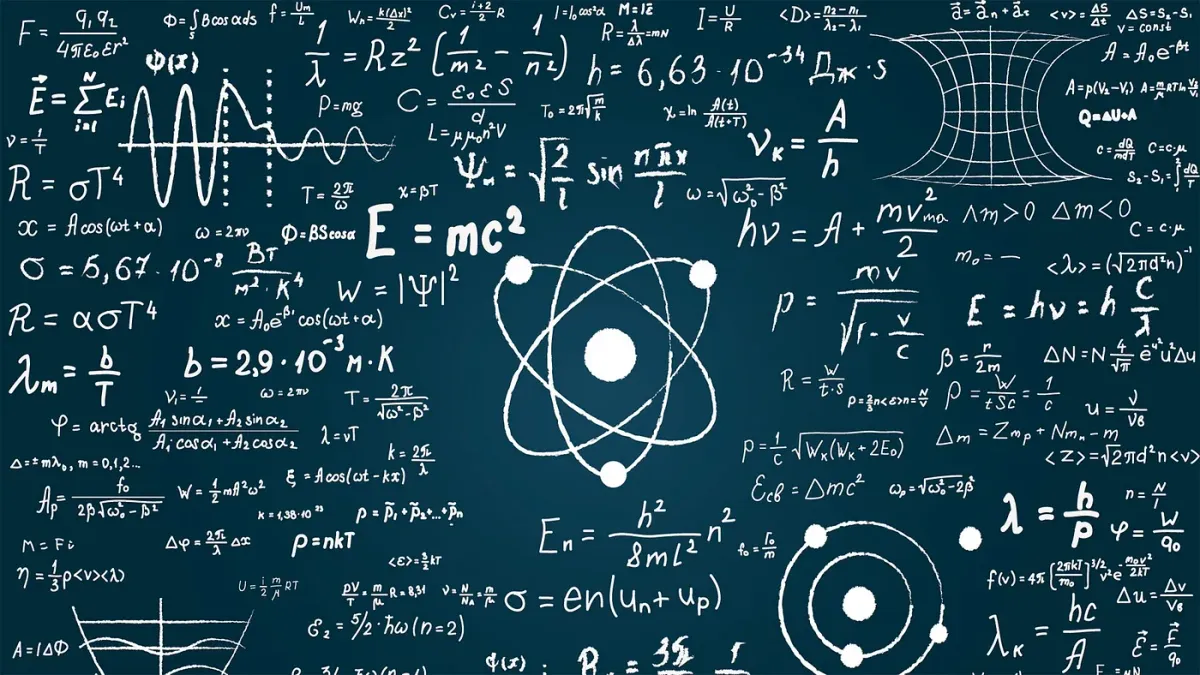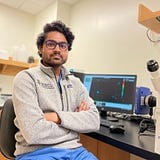How Quantum Mechanics Alters Reality
The double-slit experiment

Having graduated from university with a science degree, there comes a certain nonchalant expectation that I have a thorough understanding of the “sciences”. It is only appropriate I write this in quotations as, what is science and what is not is a debate in and of itself, as we will soon see. However, nothing could be further from the truth. Without much hesitation, I will now reexplain a simple, yet grossly misunderstand lesson, from semester two undergraduate physics that will change the way you view the world.
The double-slit photon experiment is one of the most fundamental experiments which laid the foundation for quantum mechanics. This same lesson tends to be afforded not more than a few minutes of lecture time and no more than a homework set in physics classes. Whether this is done out of consideration of preserving the next generation’s conception of reality or to spare the lecturer from addressing his own, is not the point of this discussion. I aim to talk about the life-changing experiment from a practical perspective, and for that matter will not delve into the history (which we were never taught) or the mathematics (which we spent too long learning) of the concept.
Physics Lesson
On a fundamental level, the double-slit photon experiment involved the following:

(1) Shooting photons from a photon source towards a barrier with two slits(Figure 1).
(2) Placing a detector wall behind the barrier with two slits to serve as a mechanism of measuring where the photons end up (Figure 1).

It seems like a simple experiment, however, the results baffled scientists. The expectation was the formation of two bright regions on the detector wall (which is fluorescently labelled) directly behind the two slits (Figure 2). This assumption was further solidified as the experiment was conducted two times with each slit being closed off in each experiment. The results of those experiments showed one bright region on the detector wall directly behind the respective slit (Figure 3a,3b).


However, the result of having the two slits open was not simply having two bright regions directly behind the respective slits on the detector wall. Specifically, the detector wall demonstrated a diffraction pattern, reminiscent of wave interference (Figure 4). So, what started off as a particle, ended up as a wave?

A wave interference pattern is only possible when two things [which exhibit wave behavior] interfere (as we will shortly see, photons fall under this category). Some of you may wonder if perhaps two photons that were fired in immediate succession of each other happened to interfere at a point past the double-slit barrier. However, this hypothesis was quickly disproven as the same result was seen when each photon was fired one at a time, with sufficient time in between successive firings of photons so as to prevent any such interference between two completely different photons.
So what is the cause of the observed effect? We are taught in school that the explanation lies in the concept of wave-particle duality and this is the extent to which undergraduate physics lecturers take us through this vastly deeper topic. However, we are never taught how wave-particle duality works and what it implies, leaving a large gap in our understanding of a reality-bending phenomenon. So, let’s fill in this gap.
In school, we are taught that wave-particle duality implies that particles such as photons behave not only as particles, but also as waves. This means that photons exist as not just a particle or just a wave, rather, they exist as a hybrid of the two. However, one of the fundamental differences between particles and waves is that although particles can only exist in one place at one time, a wave exists at multiple places at the same time. How can an object exist in more than one state if one state is singular in presence and the other is omnipresent, so to speak? This is where the broader concept within which wave-particle duality is a mere member comes in. This ability of matter to exist in more than one state at any given time is explained by quantum superposition, the true explanation for the illogical results of the double-slit experiment. The theory of quantum superposition states that at any given time, objects exist in a hybrid of more than one state. So, coming back to our explanation of the diffraction pattern on the detector wall: how is this possible when there is only one photon being fired at a time? Well, according to wave-particle duality, we established that photons behave as waves. But, where is the “second photon” that is necessary to cause wave interference? According to the theory of quantum superposition, a photon does not pass through just one slit or neither slits, rather it exists in a state in which it passes through a superposition of the first slit and the second slit. Sounds confusing? That’s because it is. From our understanding of reality, we can only fathom the photon existing in a state of either passing through one of the two slits or neither of the slits. However, the photon does none of those. The closest manner in which we can reduce this to something that our minds can fathom is to view the photon as passing through both slits at the same time, and then undergoing wave-interference. But, as you can already see, this is still far from our perception of reality. This is where we will take a look at chemistry to help us understand the physics.
On day one of chemistry, we are taught one simple concept: atoms form bonds to yield larger compounds. Our entire world exists because of atoms’ ability to react and form bonds. Of the many types of chemical bonds, one of the strongest is covalent bonds. Covalent bonds simply involve the sharing of valence (outermost) electrons between atoms, such that the shared electrons can allow both atoms to achieve a stable octet, or full valance shell, which all atoms seek and is the driving force behind bond formation. For simplicity, let us talk about the single bond between a hydrogen atom and an oxygen atom, as seen in the ubiquitous water molecule. Water exists and is a stable molecule because hydrogen shares its electron and oxygen shares its electron to form an internuclear bond between hydrogen and oxygen, so that both atoms reach a full valence shell and are stable (oxygen achieves having eight electrons in the valance shell by bonding with two hydrogen atoms and hydrogen is stable with only two valance electrons (one of the exceptions to the octet rule)). If we think about this more closely, we realize that in making this stable molecule, a single electron in the bond is being counted as contributing to the formation of a full valance shell for both atoms that are participating in the bond. However, practically speaking, the electron can only physically be in either the valance shell of the oxygen atom or the valence shell of the hydrogen atom at any given time. This is where quantum mechanics comes in. The principle of quantum superposition suggests that an electron can exist in a superposition of the spaces around the two atoms, and thus can be understood to occupy more than one place simultaneously, as is explained by electrons’ wave behavior. So, in simpler terms, a single electron exists in more than one location at the same time allowing for the formation of stable compounds which build our human structure and everything around us. So, our entire understanding of compounds is based on the principle that an object can exist in more than one location at any given time: a notion that defies any and all logic that we were taught.
Now, you may be wondering how the bizarre behavior of atomic particles such as photons and electrons impacts our life on a scale many magnitudes beyond such small species. The fact is, wave-particle duality does not merely apply to photons and electrons, we too have a wavelength. However, using the relationship between momentum and wavelength, we quickly see that our wavelength is many orders of magnitude smaller than even the radius of a hydrogen atom. Such small wavelengths are undetectable, however, that does not mean they do not exist. So, we also exist in a hybrid of more than one state at any given time. This is exactly what Schrödinger’s thought-experiment (Schrödinger’s cat) aimed to explore. Applying the fundamental theory of quantum mechanics, which we have shown to govern how our world works, the cat in a box left to die can be understood to exist in a hybrid state of both life and death before the box is opened. So, the cat exists in two states at the same time. Once again, this makes no sense given the metrics with which we ascertain what is real and what is not, however, this is very much real according to the theories that dictate our very own existence and society.
Conclusion
Our reality is only possible with atoms’ ability to form compounds, and as we have shown, that ability is fundamentally based on the seemingly impractical yet foundational tenets of quantum mechanics and its principle of quantum superposition. Remove this and life as we know it does not exist. Our reality is based on a discipline that explains that we can exist in more than one state at any given time, and only when our state is being measured does our state collapse to one of the states of which it is comprised. Reality is founded on seemingly illogical principles, yet we were never introduced to these in our schooling years. Perhaps the reason that is so is to avoid a fundamental questioning of our reality. Or perhaps, the reason is that never before has the foundation upon which our scientific understandings are based has had such deep connection to philosophy. Existing in more than one state at once is definitely not a physical manifestation we understand, but philosophy grapples with such matters on an almost daily basis. It begs the question: is philosophy perhaps a greater science than that which we know?
After all this you may ask, “Who cares?”.
“Human beings by nature desire to know.” — Aristotle





